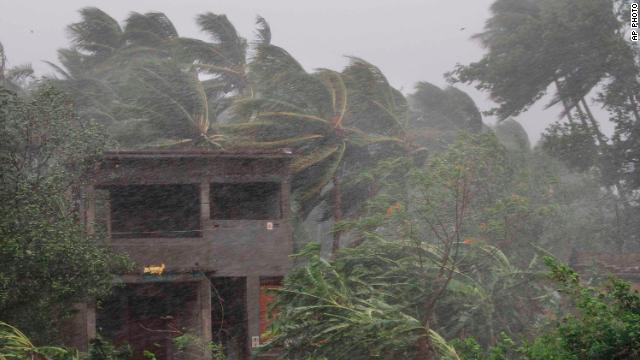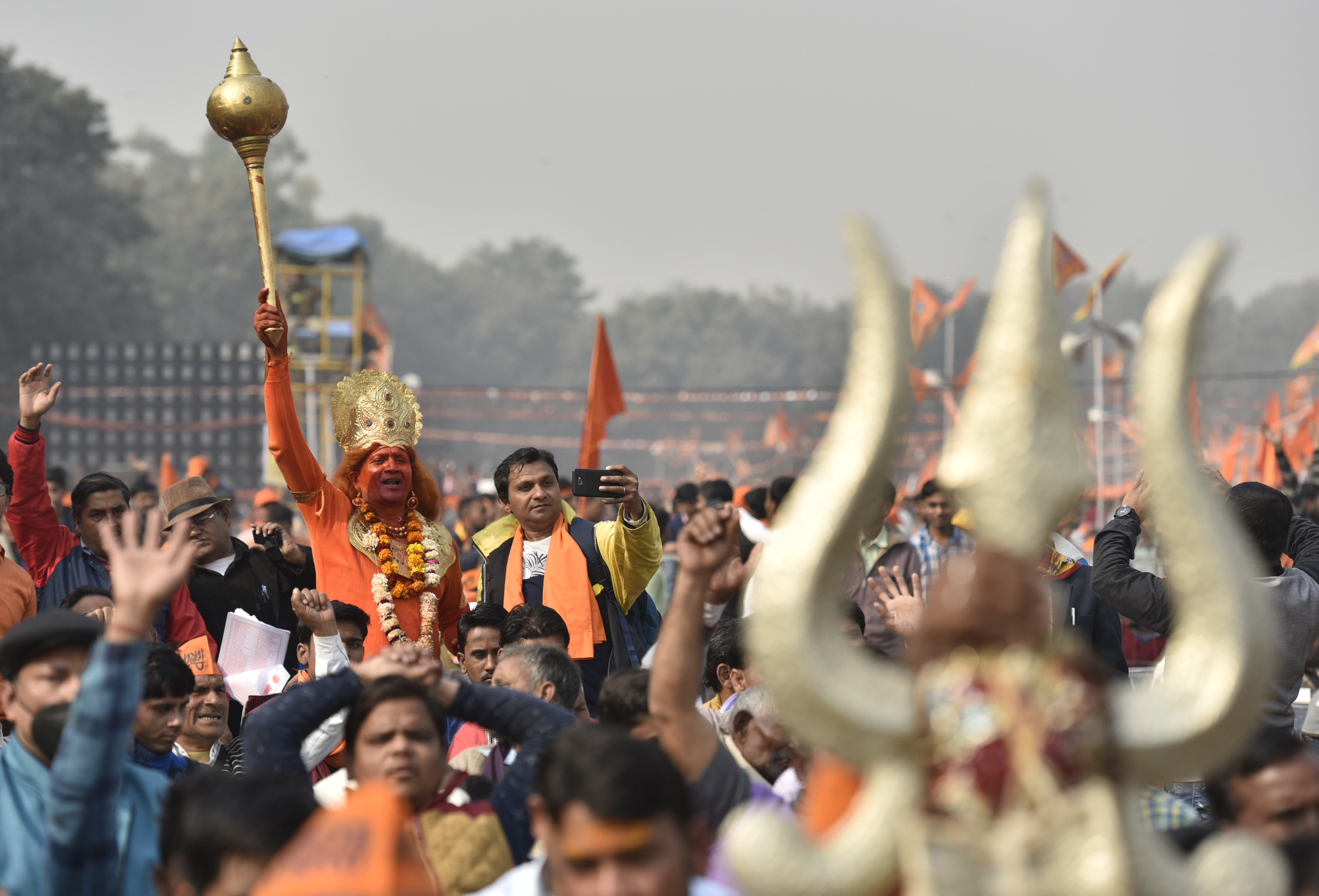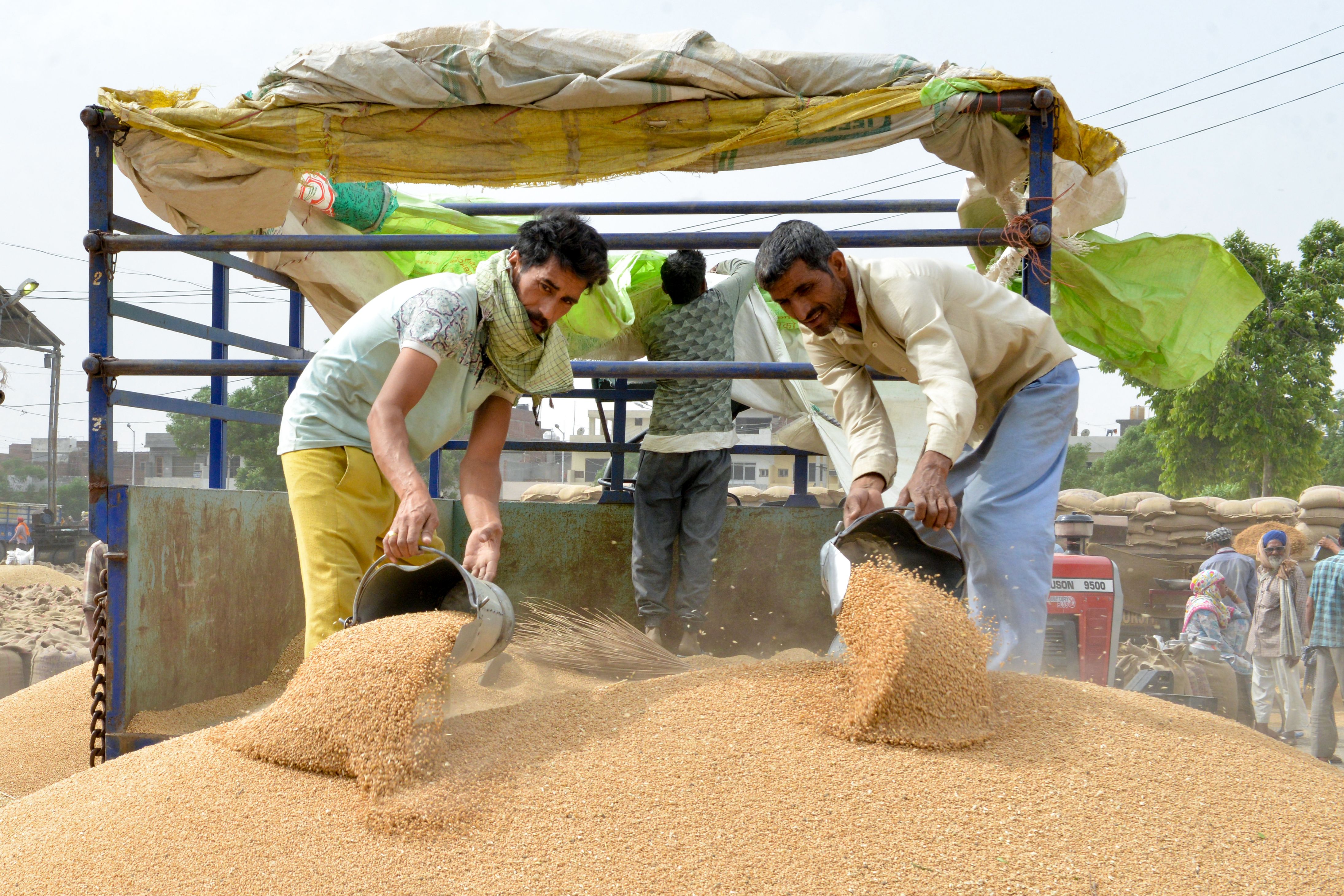Follow how phase 5 of polling unfolds on May 6 with our live election coverage here.
India election 2019: Latest updates
By Helen Regan, Nikhil Kumar, Sugam Pokharel, Swati Gupta and Manveena Suri, CNN
Follow the rest of our live coverage
2 killed as Tropical Cyclone Fani slams into India

The strongest tropical cyclone to hit India in 20 years made landfall Friday, killing two people and lashing the country's east coast with ferocious winds and torrential downpours.
Tropical Cyclone Fani struck near the city of Puri, in Odisha state, as the equivalent of a Category 4 hurricane -- bringing sustained winds of 240 kilometers per hour (150 miles per hour). The storm is expected to weaken as it moves north-northeast in the next six hours toward Kolkata, one of India's most populous cities, and Bangladesh.
The two people who died in Odisha were killed by falling trees, police spokesman Sanjeev Panda said.
Get the latest developments here.
India's strongest cyclone in 20 years about to make landfall in Odisha
From CNN's Swati Gupta, Brandon Miller and Helen Regan

What is expected to be India's strongest tropical cyclone to make landfall in 20 years is barreling toward 100 million people on the country's east coast, prompting large-scale emergency evacuations.
Prime Minister Narendra Modi said Thursday he was reviewing the country's preparedness ahead of Tropical Cyclone Fani's landfall, with wind speeds expected to reach 240 kilometers per hour (150 mph).
Follow our Tropical Cyclone Fani coverage here.
Modi compares Sri Lanka attacks and terrorism in India
From CNN's Swati Gupta
Indian Prime Minister Narendra Modi has compared the terrorist attacks in Sri Lanka to attacks in India during an election rally in Ayodhya in Uttar Pradesh.
"Recently, we have seen what happened in Sri Lanka. The same situation was here before 2014 in India. How can we forget those days when in the country every other day there was a terrorist attack," he said, referring to blasts that took place in Ayodhya and neighbouring Faizabad more than a decade ago.
Modi said other political parties had dealt with terrorism with a soft hand.
He also accused the main opposition Congress Party and the state’s regional parties of pandering to their vote bank in the Muslim community and not holding those responsible for terror attacks accountable.
“The factories of terrorism are still working in our neighbourhood. These terrorist nations are waiting for one weak government. They are waiting for an opportunity,” said Modi.
Ayodhya has been a tinder box of religious tension for decades over the demands from Hindu activists for the construction of a temple on a site where a mosque previously stood.
In 1992, the Babri mosque was pulled down by Hindu nationalists and workers belonging to right wing Hindu groups and political parties, including the Bharatiya Janata Party (BJP) -- which Modi now leads. The action led to widespread riots that killed thousands across the country.
The city has since become the symbol of communal rhetoric in Indian politics with the ruling BJP publicly stating that one of its goals was to build the temple and honour one of their most revered Hindu gods, Ram.
Modi in his speech also spoke about keeping a strong stance on Pakistan and terrorism. He referred to India’s claim of launching air strikes in Pakistan in retaliation to a February attack in Kashmir which killed 40 Indian paramilitary soldiers.
“This new India will enter your home and kill you. We will respond to a bullet with a cannon,” he said.
“When you vote for BJP, your vote will come directly to Modi. This is the land of Lord Ram, this is the land of the country’s dignity."
Modi to address rally in Ayodhya. Here's why that's a big deal
From CNN's Swati Gupta

Indian Prime Minister Narendra Modi will be speaking in the city of Ayodhya for the first time this election cycle.
Why is Ayodhya significant?
A small temple town, Ayodhya in the northern state of Uttar Pradesh has gained prominence in Indian politics over a small piece of disputed land that is nestled in the middle of the city.
The land has been a point of contention between Hindu and Muslim groups across the country and tensions over the site led to some of the deadliest nationwide rioting in modern Indian history in 1992.
What happened?
Right wing Hindu nationalists have claimed for decades that the land in Ayodhya is the birthplace of one of their most revered Hindu gods, Ram, and want a temple to be built in the exact spot to honor his memory.
However, a mosque stood in the spot where Hindu activists say is the holy site. In 1992, after months-long campaigns and rallies, thousands of party workers belonging to Hindu nationalist groups or political parties, including Modi's Bharatiya Janata Party, descended on the city and tore down the mosque.
The destruction of the mosque, known as the Babri mosque, resulted in widespread Hindu-Muslim riots across the country, in which thousands died.
What's Modi got to do with it?
Tensions continue to simmer as Hindu nationalist activists advocate for the construction of the Ram temple, but the matter of the land ownership is tied up in the courts and there has been no legal resolution.
Modi in an interview earlier this year said that the judicial process should be respected. “The legal recourse should be allowed to go on. It should not be measured politically. The issue is in the court and it should be completed there. After the court’s decision, the government will work hard to fulfill its duty,” said Modi.
Leaders of Modi’s BJP have publicly demanded the construction of the temple at the site and his rally today is being seen as sign of a promise that the temple will be built soon.
Modi campaigned on the issue before the 2014 elections and the party’s election manifestoes have included the promise to build the temple -- a demand which is central to his right wing Hindu base.
With the Kashmir terror attack in the background, the BJP has increasingly relied on Modi’s tough stance on Pakistan and terrorism during the election campaign.
Uttar Pradesh holds 80 parliamentary seats and is the most populous state in the country. It's also heavily divided along communal and caste lines. The main opposition party, Congress has stayed away from making any public remarks on Ayodhya or the temple controversy.
BJP is facing tough competition from a regional alliance in the state. The Samajwadi Party (SP) and the Bahujan Samaj Party (BSP) -- traditionally rivals-- have joined hands in an attempt to wrest away the most electorally important state in the elections from BJP’s hands.
The BJP swept the state in both the 2014 national elections and the state elections in 2017.
Home to some of the worst riots in recent memory, the state is being currently governed by a priest-turned-politician, Yogi Adityanath.
May Day in India: How a land of 522 million workers marks Labor Day
From CNN's Forrest Brown

Each May 1, workers in India join others around the world to mark May Day -- also called Labor Day or International Workers' Day, depending on local customs.
It's quite fitting that India celebrates with an official holiday in some of its 29 states and seven union territories. After all, the country has an estimated 522 million workers. For comparison, that's more than the entire population of the United States, at 327 million people.
How does India mark the day?
India's first Labor Day was celebrated in 1923 in Madras, now called Chennai.
The Labor Kisan Party of Hindustan organized the first celebration on Chennai's Marina Beach. The red flag now synonymous with May Day in India was also used for the first time at this celebration. Over time, the holiday -- also known as Antarrashtriya Shramik Diwas or Kamgar Din -- spread to other parts of the country.
According to Hindu.com, organizations and trade unions arrange pageants and "children enter contests so they can understand the importance of fairness for workers."
Read more on the origins of May Day here.
Just joining is?
Read more of our election coverage here.



